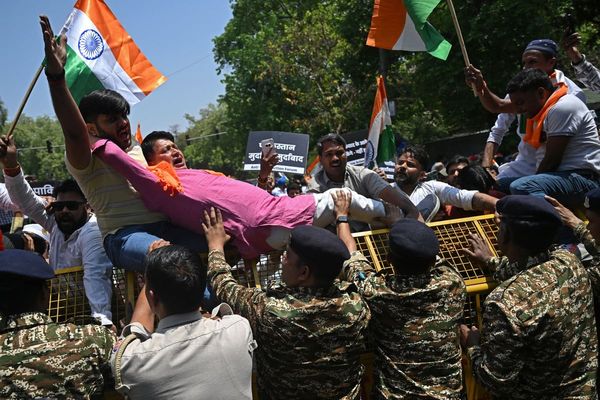
DID you know that there were once dozens of "secret society" branches in the Hunter Valley?
Or rather, important self-help groups, who might be better called "societies with secrets".
Like modern trade unions, they served a crucial purpose for decades providing mutual aid to improve the health, safety and welfare of their fellow workers.
However, like the Medieval guilds, representing anyone from bakers to stone masons, they also came over time to represent a challenge to the power and authority of governments.
Their secrecy was made out to be anti-democratic and governments targeted these numerous fraternal (as in benefiting a brother) societies with their secret handshakes, rituals and passwords to conform, or presumably, be crushed.
These groups, many with names we would now brand as odd, are not regarded as relevant today.
After 180 years, Australian society has greatly changed for the better, and the need for such groups is much less. But these numerous, often politically active, fraternal societies did respond to government pressure around the year 1900 with "dress ups".
Members of these societies with secrets paradoxically fought back with major public parades, marching in strength to show off while displaying large ornate banners rich in symbolism.
A prime example in Newcastle might be illustrated in today's picture taken circa 1900, of an Eight-Hour Day procession watched by possibly thousands of people, down what is now the middle of the Hunter Street Mall.
Visible in the background are the twin sentinel towers of Newcastle's borough markets that once stood facing down Market Street towards the harbour. Built in 1870, the towers were a city landmark until 1915 when replaced by the Strand Theatre. Then in November 1980, Market Square officially opened there. The site is again facing demolition awaiting a new development.
As the 1900 photograph shows, the elaborate banners proudly held aloft were among the most-prized possessions of the early union and craft groups.
According to labour historian Dr Bob James, an expert on the subject, today's national health schemes, for example, do what the fraternal societies had been doing.
"Their struggle with authority explains the original need for secrecy, in order to survive," Dr James once told University of Newcastle (UON) researchers.
"They responded with colourful, coded regalia and banners. Their parades and public displays were a political offensive, an insistence of their legitimacy.
"Put simply, the fraternals wanted to create a better world . . . through collective welfare and mutual protection, but authorities fought back."
Dr James said the origin of all fraternal societies, including the Freemasons, were in the ancient craft guilds. These original societies protected wage rates and working conditions for their members.
He said his long journey to discover more began when once wandering around Newcastle streets and discovering reminders of past times, like the mysterious G.O.O.F hall in Cooks Hill.
Soon his search widened into an obsession to discover more, not only about the Freemasons and old-time friendly societies (not-for profit financial bodies) but groups like the Druids, the Order of Oddfellows, the Ancient Order of Foresters, the (tee-totaller) Rechabites, the Ancient Order of Maccbeans, and the Buffaloes.
His hunt for many of these, now largely gone, secret societies has continued for about 40 years. He has gone to distant places in search of once precious society relics, long thought forgotten and destroyed.
Along the way he's also filled a third of his house with society memorabilia, including historic union banners, ritual artefacts such as horns, society charters, founding documents, rare photos, medals and ceremonial objects like aprons of office.
It also culminated, sort of, in Dr James officially handing over part of his amazing 2000-item collection last week to the UON archive, along with a generous donation to its special collections team. It follows a two-year partnership with the university, including digitising the unique collection to provide significantly better public access to this hidden history of the Hunter.
Launching a Fraternal Studies Collection in its newly upgraded exhibition space in the Auchmuty Library, the UON's Deputy Vice-Chancellor (Academic), Mark Hoffman, described the collection as "absolutely wonderful" and "incredible".

Dr James said much of the material "lost" from earlier generations that he had saved was damaged, under-appreciated or simply thrown away. It might have all gone to tips.
"I'm a historian. I'm seeking a higher truth," he told the UON gathering.
Earlier, Dr James said his view of his collected material had "changed many times" over three decades, as his understanding of it had deepened. He said his vast collection was visual evidence that these once influential secret societies existed. It was akin to a midden heap for white Australia.
Ironically, Dr James once said he grew up hating history for various reasons. It was also a time when nothing was taught about Indigenous, or even female, history. Now he was flooded with material of the forgotten history of the fraternal societies.
Dr James said he had also given 80 boxes of Masonic Lodge material to Canberra, plus many boxes of magazines belonging to the Antediluvian Order of Buffaloes to NSW State Library.
His past fossicking also revealed that the old Wallsend Hospital, built in 1893, was once known as the Miner's Hospital. More accurately, it was as a result of miners and fraternal societies raising funds to build a series of 'hospitals' and a related health service.
He also claimed the T&G (Temperance and General Insurance) still had a named building in Newcastle that was started by the Rechabites, a friendly society.
Dr James said the conservative Orange Order (protestant) movement (from Northern Ireland) was also a very clear example of a fraternal society "being airbrushed out of Newcastle history".
Dr James said his own incomplete records showed more than 400 Orange lodges in NSW (from the 1840s) of which about 150 were probably female with their own regalia.
And rivalling the spread of Masonic lodges, it's believed there were once 20 separate Orange lodges in Newcastle alone, with others at Minmi, Catherine Hill Bay and Weston.







